Night To Remember, A (UK)
TITANIC... The greatest sea drama in living memory told as it really happened!
Certificate: PG
Running Time: 118 mins
Retail Price: £19.99
Release Date:
Content Type: Movie
Synopsis:
Side A: `A Night To Remember`
On April 10th, 1912, RMS Titanic sailed from Southampton on her maiden voyage. On her fourth night at sea she struck an iceberg and sank with the loss of 1,500 passengers and crew. The film faithfully depicts the drama, heroism and horror of the night the unsinkable sank.
Side B: The Making Of `A Night To Remember`
Includes behind the scenes footage of the movie, including interviews with `A Night To Remember` Producer William MacQuitty (who saw the original ship launched) and the author of the book, Walter Lord. Features historical footage of the Titanic, the 1958 London film premiere and the original theatrical trailers.
Special Features:
Interactive Menus
Scene Access
In-Depth Biographies
Making Of The Feature
Original Theatrical Trailers
Video Tracks:
Widescreen Letterbox 1.85:1
Audio Tracks:
Dolby Digital 5.1 English
Subtitle Tracks:
English
CC: English
Norwegian
Directed By:
Roy Ward Baker
Written By:
Eric Ambler
Walter Lord
Starring:
Anthony Bushell
Robert Ayres
Kenneth More
Honor Blackman
Ronald Allen
Soundtrack By:
William Alwyn
Director of Photography:
Geoffrey Unsworth
Editor:
Sidney Hayers
Costume Designer:
Yvonne Caffin
Producer:
William MacQuitty
Executive Producer:
Earl St. John
Distributor:
Rank Organisation
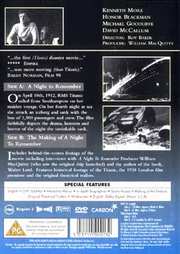
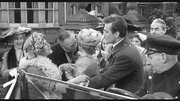
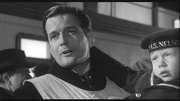
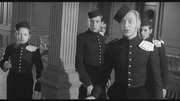


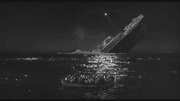
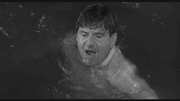
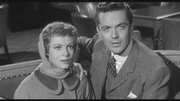
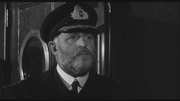
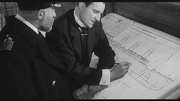
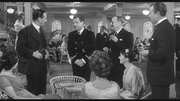
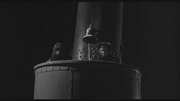
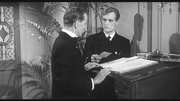
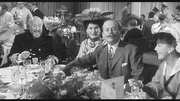
































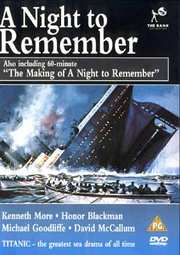
Your Opinions and Comments
Although in his acknowledgments Lord thanked a Fox employee for being "a gold mine of useful leads," Lord's meticulous page-turner reverses Hollywood's priorities. Drawing on historical materials and survivors' first-hand accounts, it provides a minute-by-minute record of what actually happenedthe mundane ness and absurdity as well as the heartbreak. In this high point of you-are-there realism, kaleidoscopic anecdotes flesh out and clarify the ship's downfall and the hierarchical treatment of its first-, second-, and third class passengers.
The impulse to get things right also motivates the superb 1958 British movie adaptation, produced by William MacQuitty, directed by Roy Baker, and written by Eric Ambler. As a boy of six, MacQuitty watched the Titanic's launch from a Belfast shipyard. But the experience all three men sharedmorale-boosting documentary and feature production in World War IIaccounts for this film's stirring vividness. In its directness of attack and its use of composite characters, A Night to Remember brought the best of Britain's fact-based war culture into the late '50s. The moviemakers give their period piece the immediacy of a docudrama and in so doing pierce through popular misconceptions. The Titanic is fixed in the common vocabulary as a symbol of slipshod design: Politicians accuse complacent foes of "dancing on the Titanic," cut-rate travel services contend, "We're not the Queen Mary, but we're not the Titanic, either." By positioning the steamer as the film's true star, MacQuitty and company remind us that it wasif not "unsinkable"a paragon of power and luxury. Human error and natural calamity led to its fatal scrape with an iceberg. A Night to Remember has a plainspoken complexity. It emphasizes that laxness, snobbery, and hubris coexisted with discipline and courage on a night when 705 were saved and roughly 1500 lost. The film allows you to be infuriated by any number of screw-ups and oversights, including the neglect of steerage passengers, yet still be awestruck by the crisp judgment of the ship's captain (Laurence Naismith), second officer (Kenneth More), and builder (Michael Goodliffe). In the midst of mayhem, Mrs. Isidor Straus spurns a seat in a lifeboat so she can spend the remainder of her life with her husband, and a gentleman tells his wife and three children to go on and not worry, because he'll follow soon (he knows he won't; there aren't enough boats). This film, like Lord's history, captures the final gasp of high-society chivalry.
Lord writes in his book: "What troubled people especially was not just the tragedyor even its needlessnessbut the element of fate in it all. If the Titanic had heeded any of the six ice messages on Sunday . . . if ice conditions had been normal . . . if the night had been rough or moonlit . . . if she had seen the berg fifteen seconds sooneror fifteen seconds later . . . if she had hit the ice any other way. . . if her watertight bulkheads had been one deck higher . . . if she had carried enough boats . . . if the Californian [just 10 miles away] had only come. Had any one of these 'ifs' turned out right, every life might have been saved. But they all went against hera classic Greek tragedy."
Eric Ambler, the screenwriter, is famous for pioneering the thriller form in modern classics like his novel A Coffin for Dimitrios, not for updating Greek tragedy. Yet in Dimitrios' opening lines, Ambler admits that chance can "operate with a sort of fumbling coherence readily mistakable for the workings of a self-conscious Providence." In his scripts for military movies like The Cruel Sea, he depicts the waste and the human salvage of men in desperate straits. A Night to Remember is an Ambler thriller turned inside out. Although you know the ship will sink, Ambler marshals his information so skilfully that he catches you up in the strands of a fatal parabola. And although you keep waiting for the doomed to enter a "state of abandon" (a state Ambler charts in his books, in the phrase of his great fan Graham Greene), most of the Titanic's victims face death with dignity and courage.
Director Baker, cinematographer Geoffrey Unsworth, and art director Alex Vetchinsky achieve maximum tension and clarity; Bill Wallington's ingenious special effects never overwhelm the drama. The moviemakers increasingly employ Carol Reed-like tilted shots. But in Reed's films, the director tilts the camera, to express moral and psychological uncertainty. Baker keeps the camera level:
The sets tilt as the ship goes under. When a rocking-horse sways menacingly in close-up, the floor seems to drop from under your feet; the world loses its bearings. As the documentary notes, the hydraulic jacks that shifted the sets emitted a groan identical to the sound of the teetering shipthe eeriest example of the way craft imitated life and created art. You believe the stalwart second officer when he says he'll never be sure againof anything.